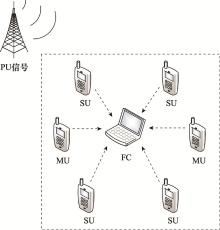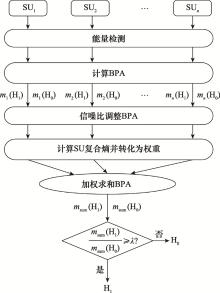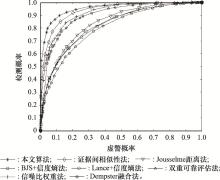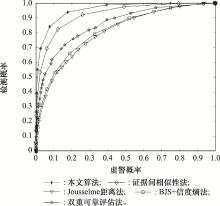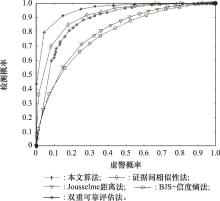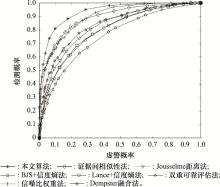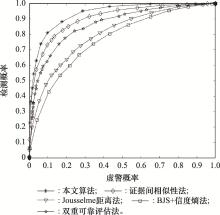| 1 |
LIANG Y C , CHEN K C , LI G Y , et al. Cognitive radio networking and communications: an overview[J]. IEEE trans.on Vehicular Technology, 2011, 60 (7): 3386- 3407.
doi: 10.1109/TVT.2011.2158673
|
| 2 |
YUCEK T , ARSLAN H . A survey of spectrum sensing algorithms for cognitive radio applications[J]. IEEE Communications Surveys & Tutorials, 2009, 11 (1): 116- 130.
|
| 3 |
ALI A , HAMOUDA W . Advances on spectrum sensing for cognitive radio networks: theory and applications[J]. IEEE Communications Surveys & Tutorials, 2016, 19 (2): 1277- 1304.
|
| 4 |
GANESAN G , LI Y . Cooperative spectrum sensing in cognitive radio, part Ⅱ: multiuser networks[J]. IEEE Trans.on Wireless Communications, 2007, 6 (6): 2214- 2222.
doi: 10.1109/TWC.2007.05776
|
| 5 |
AKYILDIZ I F , LO B F , BALAKRISHNAN R . Cooperative spectrum sensing in cognitive radio networks: a survey[J]. Physical Communication, 2011, 4 (1): 40- 62.
doi: 10.1016/j.phycom.2010.12.003
|
| 6 |
PENG Q H, ZENG K, WANG J, et al. A distributed spectrum sensing scheme based on credibility and evidence theory in cognitive radio context[C]//Proc. of the IEEE 17th International Symposium on Personal, Indoor and Mobile Radio Communications, 2006.
|
| 7 |
NGUYEN-THANH N , KOO I . An enhanced cooperative spectrum sensing scheme based on evidence theory and reliability source evaluation in cognitive radio context[J]. IEEE Communications Letters, 2009, 13 (7): 492- 494.
doi: 10.1109/LCOMM.2009.090043
|
| 8 |
周亚建, 刘凯, 肖林. 基于DS证据理论的加权协作频谱检测算法[J]. 通信学报, 2012, 33 (12): 19- 24.
|
|
ZHOU Y X , LIU K , XIAO L . Weighted cooperative spectrum sensing algorithm based on dempster-shafer evidence theory[J]. Journal of China Institute of Communications, 2012, 33 (12): 19- 24.
|
| 9 |
RAWAT A S , ANAND P , CHEN H , et al. Collaborative spectrum sensing in the presence of Byzantine attacks in cognitive radio networks[J]. IEEE Trans.on Signal Processing, 2010, 59 (2): 774- 786.
|
| 10 |
AL-MATHEHAJI Y , BOUSSAKTA S , JOHNSTON M , et al. Defeating SSDF attacks with trusted nodes assistance in cognitive radio networks[J]. IEEE Sensors Letters, 2017, 1 (4): 1- 4.
|
| 11 |
李文立, 郭凯红. DS证据理论合成规则及冲突问题[J]. 系统工程理论与实践, 2010, 30 (8): 1422- 1432.
|
|
LI W L , GUO K H . Combination rules of DS evidence theory and conflict problem[J]. Systems Engineering-Theory & Practice, 2010, 30 (8): 1422- 1432.
|
| 12 |
HAN Y, CHEN Q, WANG J X. An enhanced DS theory cooperative spectrum sensing algorithm against SSDF attack[C]//Proc. of the IEEE 75th Vehicular Technology Conference, 2012.
|
| 13 |
于美婷, 赵林靖, 李钊. 基于DS证据理论的协作频谱感知改进方法[J]. 通信学报, 2014, 35 (3): 168- 173.
|
|
YU M T , ZHAO L J , LI Z . Improved cooperative spectrum sensing scheme based on DS theory in cognitive radio network[J]. Journal on Communications, 2014, 35 (3): 168- 173.
|
| 14 |
孙志国, 任欣悦, 陈增茂, 等. 基于证据间相似性的协作频谱感知方法与性能分析[J]. 通信学报, 2020, 41 (12): 139- 147.
|
|
SUN Z G , REN X Y , CHEN Z M , et al. Cooperative spectrum sensing method and performance analysis based on similarity between evidences[J]. Journal on Communications, 2020, 41 (12): 139- 147.
|
| 15 |
XIAO F Y . Multi-sensor data fusion based on the belief divergence measure of evidences and the belief entropy[J]. Information Fusion, 2019, 46, 23- 32.
doi: 10.1016/j.inffus.2018.04.003
|
| 16 |
王旋, 狄鹏, 尹东亮. 基于Lance距离和信度熵的冲突证据融合方法[J]. 系统工程与电子技术, 2022, 44 (2): 592- 602.
|
|
WANG X , DI P , YIN D L . Conflict evidence fusion method based on lance distance and credibility entropy[J]. Systems Engineering and Electronics, 2022, 44 (2): 592- 602.
|
| 17 |
YE F , BAI P , TIAN Y . An algorithm based on evidence theory and fuzzy entropy to defend against SSDF[J]. Journal of Systems Engineering and Electronics, 2020, 31 (2): 243- 251.
doi: 10.23919/JSEE.2020.000002
|
| 18 |
YAO D G , YUAN S G , LV Z B , et al. An enhanced cooperative spectrum sensing scheme against SSDF attack based on Dempster-Shafer evidence theory for cognitive wireless sensor networks[J]. IEEE Access, 2020, 8, 175881- 175890.
|
| 19 |
WANG Y J , ZHANG K Z , DENG Y . Base belief function: an efficient method of conflict management[J]. Journal of Ambient Intelligence and Humanized Computing, 2019, 10 (9): 3427- 3437.
|
| 20 |
JOUSSELME A L , GRENIER D , BOSSE E . A new distance between two bodies of evidence[J]. Information Fusion, 2001, 2 (2): 91- 101.
|
| 21 |
DENG Y . Uncertainty measure in evidence theory[J]. Science China Information Sciences, 2020, 63, 210201.
|
| 22 |
MA L C , XIANG Y , PEI Q Q , et al. Robust reputation-based cooperative spectrum sensing via imperfect common control channel[J]. IEEE Trans.on Vehicular Technology, 2017, 67 (5): 3950- 3963.
|
| 23 |
HATA M . Empirical formula for propagation loss in land mobile radio services[J]. IEEE Trans.on Vehicular Technology, 1980, 29 (3): 317- 325.
|
